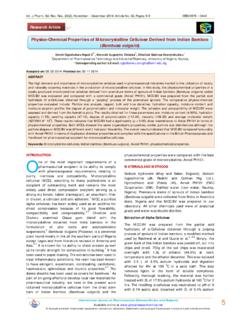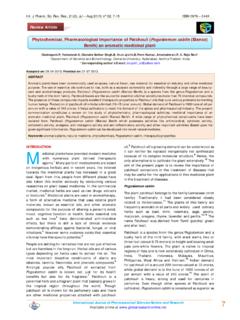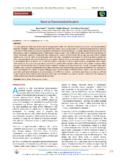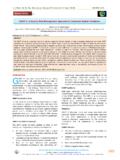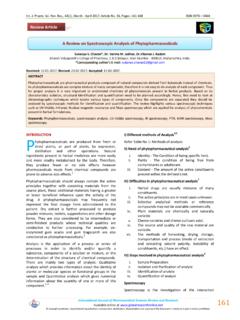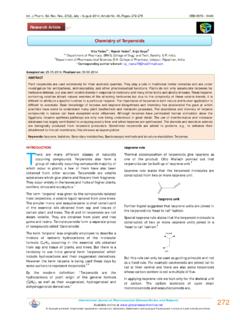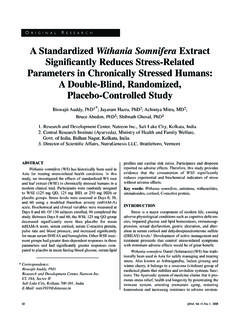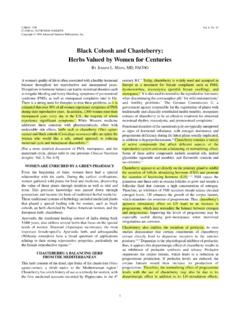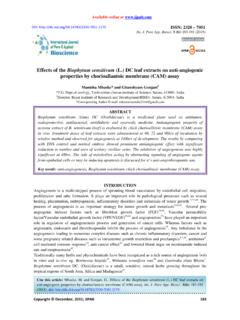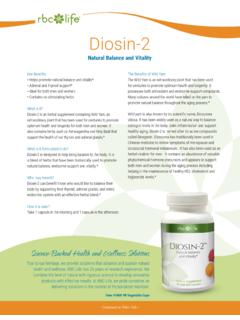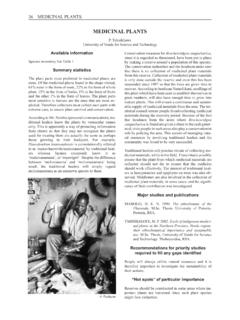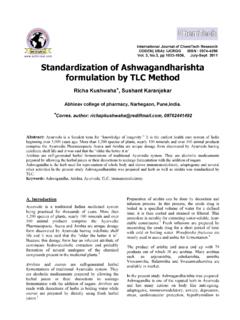Transcription of A Pharmacological Perspective - Global Research …
1 Int. J. Pharm. Sci. Rev. Res., 24(2), Jan Feb 2014; n 25, 150-159 ISSN 0976 044X International Journal of Pharmaceutical Sciences Review and Research Available online at 150 Swetha Dasaroju*, Krishna Mohan Gottumukkala Centre for Pharmaceutical Sciences (CPS), Institute of Science and Technology (IST), Jawaharlal Nehru Technological University Hyderabad (JNTUH), Andhra Pradesh, India.
2 *Corresponding author s E-mail: Accepted on: 20-11-2013; Finalized on: 31-01-2014. ABSTRACT Phyllanthus emblica Linn. Or Emblica officinalis Gaertn. commonly known as Indian gooseberry or Amla is one of the most important medicinal plants in Indian traditional systems of medicine (Ayurveda, Unani and Siddha). It is a well-known fact that all parts of amla are useful in the treatment of various diseases. Among all, the most important part is fruit. Amla fruit is widely used in the Indian system of medicine as diuretic, laxative, liver tonic, refrigerant, stomachic, restorative, anti-pyretic, hair tonic, ulcer preventive and for common cold, fever; as alone or in combination with other plants.
3 Phytochemical studies on amla disclosed major chemical constituents including tannins, alkaloids, polyphenols, vitamins and minerals. Gallic acid, ellagic acid, emblicanin A & B, phyllembein, quercetin and ascorbic acid are found to be biologically effective. Research reports on amla reveals its analgesic, anti-tussive, anti-atherogenic, adaptogenic; cardio, gastro, nephro and neuroprotective, chemopreventive, radio and chemo modulatory and anti-cancer properties. Amla is also reported to possess potent free radical scavenging, antioxidant, anti-inflammatory, anti-mutagenic, immunomodulatory activities, which are efficacious in the prevention and treatment of various diseases like cancer, atherosclerosis, diabetes, liver and heart diseases.
4 In this article, we discuss the nutritional value, biochemical constituents, traditional uses, medicinal value of amla and its use as a household remedy. We also emphasized the mechanisms behind the Pharmacological activities based on the recent Research reports and tried to summarize the results of Research done from the past 5 years with proper specifications on the future prospects in a Pharmacological Perspective . Keywords: Amla, traditional uses, chemical constituents, Pharmacological activities, mechanisms, therapeutic applications.
5 INTRODUCTION other Nature has gifted mankind with tremendous medicinal plants to create a disease free and healthy life. Abundant medicinal plants are presented in the Indian traditional systems of medicine (like Ayurveda, Unani, siddha), mostly used one amongst them is Indian gooseberry or Amla, also known as Phyllanthus emblica Linn. (Syn. Emblica officinalis Gaertn.) belongs to the family Euphorbiaceae,1 which is an important medicinal herb in Ayurveda and Unani systems of medicine.
6 It is enormously used as a tonic to restore the lost body s energy and vigor. Amla is a small to medium sized deciduous tree, found in throughout India, Pakistan, Uzbekistan, Sri Lanka, South East Asia, China and Malaysia. It grows about 8-18m height with thin light grey bark, leaves are simple, light green, sub-sessile, closely set along the branchlets looks like pinnate leaves; flowers are greenish yellow; fruits are globose, fleshy, pale yellow with six obscure vertical furrows enclosing six trigonous seeds in two seeded three crustaceous cocci.
7 Amla is highly nutritious and is one of the richest sources of vitamin-C, amino acids and It contains several chemical constituents like tannins, alkaloids and Among all hydrolysable tannins, Emblicanin A and B; gallic acid, ellagic acid are reported to possess biological activity. Almost all parts possess medicinal properties, particularly fruit, which has been used in Ayurveda as a powerful rasayana and in customary medicine in the treatment of diarrhoea, jaundice, inflammation and several other Amla fruit is widely used in the Indian system of medicine as alone or in combination with other plants and is used to treat common cold and fever, as diuretic, laxative, liver tonic, refrigerant, stomachic.
8 Restorative, anti-pyretic, hair tonic; to prevent ulcer and dyspepsia. Pharmacological Research reports on amla reveals its analgesic,5 anti-tussive,6 anti-atherogenic,7 adaptogenic;8 cardio,9 gastro,10 nephro,11 neuro12 protective and anti-cancer13 properties. Amla is also reported to possess chemopreventive,14 radio,15 chemo16 and immunomodulatory,17 free radical scavenging,18 antioxidant,19 anti-inflammatory,20 anti-mutagenic activities. These properties are efficacious in the prevention and treatment of various diseases like cancer, atherosclerosis, diabetes, peptic ulcer, anemia, liver, heart diseases and various other disorders.
9 The present work is a trial to understand the nutritional value, traditional uses, biochemical constituents and important medicinal values of Amla by emphasizing the mechanisms behind the activities and enlightens the therapeutic applications and clinical trials. It also summarizes the Research done on amla from the past 5 years and also specifies the aspects that warrant future Research establishing its activity and use in several diseases.
10 Current Trends in the Research of Emblica officinalis (Amla): A Pharmacological PerspectiveMReview Article Int. J. Pharm. Sci. Rev. Res., 24(2), Jan Feb 2014; n 25, 150-159 ISSN 0976 044X International Journal of Pharmaceutical Sciences Review and Research Available online at 151 CHEMICAL CONSTITUENTS Amla is one of the most extensively studied plants. Reports suggest that it contains tannins, alkaloids and Fruits have 28% of the total tannins distributed in the whole plant.

